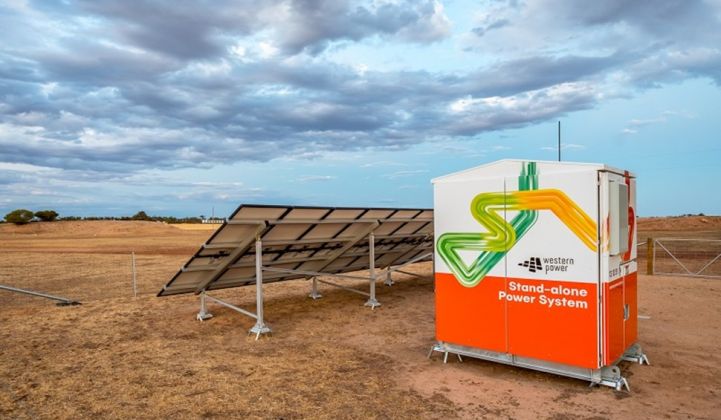A fiery summer has left Australian power firms pleading with regulators to do something that is anathema to most utilities: kick their customers off the grid.
Companies operating within the country’s National Electricity Market (NEM), which covers the south and east parts of Australia, believe that giving remote customers a mini- or microgrid setup could be a better safeguard against bush fire blackouts than a grid connection.
Massive bush fires across much of southern and eastern Australia exposed the frailty of electricity distribution systems in December and January.
The blazes caused 80,000 blackouts across NEM territory, affecting thousands of miles of network and damaging more than 5,000 power poles, according to Energy Networks Australia, Australia’s distribution system operator association.
Remote customers are particularly at risk from bush fire blackout problems, not just because they are joined to the network by long lines that are more prone to damage but also because it can take utility teams longer to locate and repair power line faults.
Solar takes lead in replacing the poles
To safeguard against such challenges, utilities in the state of Western Australia, which are not connected to the NEM, last year started exchanging remote customer grid connections for standalone power systems (SAPS), which typically comprise a mix of solar, battery storage and diesel generation.
Perth-based Western Power, which started piloting the concept in 2016, found that six SAPS customers had a total of less than five hours of power outages in a year, compared to almost 70 hours on the network connections they had previously been using.
The pilot revealed customers were happier with their utility service and were relying on solar for more than 90 percent of their energy needs.
Beyond the customer benefits, SAPS is attractive to distribution network operators because the systems are easier and cheaper to maintain than poles and wires.
“All of our networks have very remote customers given the size and scale of Australia,” said Jill Cainey, general manager of networks at Energy Networks Australia, in an interview with GTM earlier this year. “That means there are a lot of long pieces of string connecting a very few customers to the wider distribution network.”
Western Australia-based Horizon Power last year became the first electricity provider in the country to begin moving customers onto SAPS on a commercial basis.
By October last year, it had pulled down around 40 miles of poles and cables and moved eight customers off-grid, with plans to install another 17 SAPS by the end of 2019. But the company that has embraced SAPS the most so far is Western Power.
The network operator has identified 15,000 sites that could benefit from moving to SAPS over the coming decade. That’s equivalent to 1.5 percent of all the customers in Western Australia’s Wholesale Electricity Market.
As of March, Western Power was working to move more than 60 sites onto SAPS. Elsewhere, “A lot of networks servicing regional and rural areas are looking at the technology,” said Michael Lewis, media and communications manager at Energy Networks Australia.
Red tape threatens expansion
But plans to extend SAPS into the NEM have hit a regulatory snag. Unlike distribution network operators in Western Australia, which are all owned by the state government, NEM players are private companies subject to competition regulation.
And the Australian Energy Market Commission is keen to make sure NEM customers have as much access to market competition for SAPS as they do for traditional electricity provision.
To this end, the Australian Energy Market Commission has proposed that NEM distribution network operators should ring-fence the distribution-related elements of SAPS, which are provided on a monopoly basis, from the generating systems, which could theoretically be procured on the open market.
In an explanatory note issued last December, the Australian Energy Regulator clarified its position, stating: “We grant waivers where the costs of ring-fencing compliance exceed [the] benefits to customers.”
However, Energy Networks Australia believes it will ultimately be up to distribution network operators to provide all the components of SAPS. Having to apply for a waiver in each case will simply delay the progress of installations that are beneficial to its members and their customers.
In February, it said: “The implicit assumption in the draft rules that effective competition will soon develop in the remote areas where SAPS will be installed is unrealistic.”
In fairness, the deployment of SAPS is not as critical in the NEM as in Western Australia. Based on research volunteered by network operators around the country, only around 2,400 of 9 million NEM customers would likely benefit from SAPS.
But as the experience of recent months has shown, these customers may be more susceptible to bush fire blackouts and harder to keep on the grid cost-effectively. And it’s not a trivial cost, which is why SAPS deployment stacks up economically even though the equipment involved is expensive.
“If you’ve got a community of 100 people which is 200 miles from the nearest substation, then you’re spending anything up to AUD $10,000 to $20,000 per year per customer just to clean the vegetation,” said Jeremy Harrison, principal analyst at consultancy Delta Energy & Environment.




